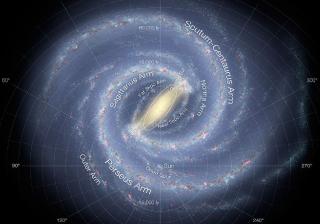Bibcode
Beronya, D. M.; Karpova, A. V.; Kirichenko, A. Yu; Zharikov, S. V.; Zyuzin, D. A.; Shibanov, Yu A.; Cabrera-Lavers, A.
Referencia bibliográfica
Monthly Notices of the Royal Astronomical Society, Volume 485, Issue 3, p.3715-3720
Fecha de publicación:
5
2019
Número de citas
14
Número de citas referidas
13
Descripción
We report detection of the likely companion of the binary millisecond
pulsar (MSP) J0740+6620 with the Gran Telescopio Canarias in the r' and
i' bands. The position of the detected starlike source coincides with
the pulsar coordinates within the 1σ uncertainty of ≈0.2
arcsec. Its magnitudes are r' = 26.51 ± 0.17 and i' = 25.49
± 0.15. Comparing the data with the white dwarf (WD) cooling
tracks suggests that it can be an ultracool helium-atmosphere WD with
the temperature ≲3500 K and cooling age ≳5 Gyr. The age is
consistent with the pulsar characteristic age corrected for kinematic
effects. This is the reddest source among known WD companions of MSPs.
Detection of the source in other bands would be useful to clarify its
properties and nature.
Proyectos relacionados

Morfología y dinámica de la Vía Láctea
El Proyecto se estructura en dos partes, diferenciadas pero complementarias: morfología y dinámica. El estudio detallado de la morfología de la Vía Láctea pretende proveer una base de datos de distribución estelar en las regiones más alejadas y extintas de nuestra Galaxia, mediante el desarrollo de modelos semiempíricos a partir de la información
Martín
López Corredoira